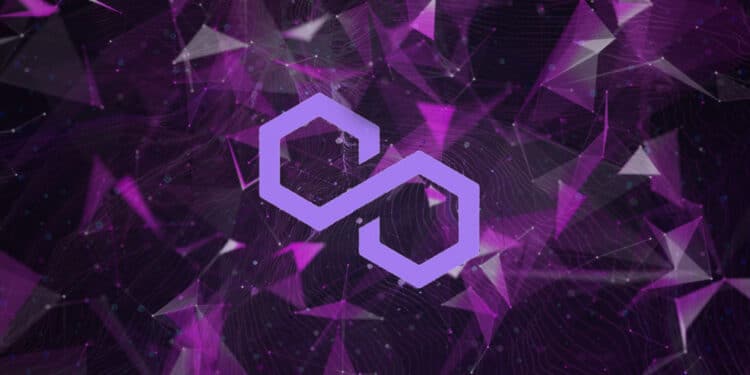NFTs (non-fungible tokens) have had a far-reaching influence on cryptocurrencies in the last two years, making them a multi-billion dollar industry.
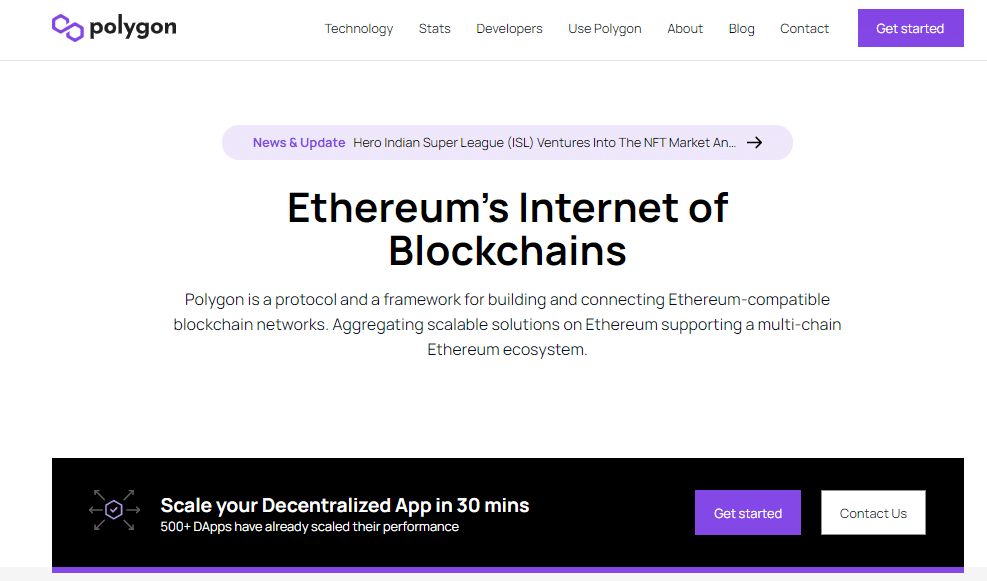
At their core, these tokens are cryptographic and untampered means of putting a stamp of ownership on a broad range of digital assets like art, music, images, collectibles, in-game items, copyright, licenses, contracts, etc.
Of course, you need a blockchain to create an NFT, the most prominent of which continues being Ethereum. However, Ethereum’s abnormally high transaction costs have been well-documented, clearly leading users to search for cheaper alternatives.
One of these is Polygon, which is technically a scaling solution to Ethereum. Polygon allows developers to build user-friendly, low-cost, secure, and scalable dApps (decentralized applications).
Presently, 402 NFT-related apps leverage Polygon’s technology to some extent and use the network’s utility token, MATIC, which regularly features in the top 20 for most traded coins. While Polygon’s NFT ecosystem is nowhere near as vast as its predecessor, it steadily grows.
So, without further ado, let’s now dig into the best 5 NFT projects using Polygon.
OpenSea
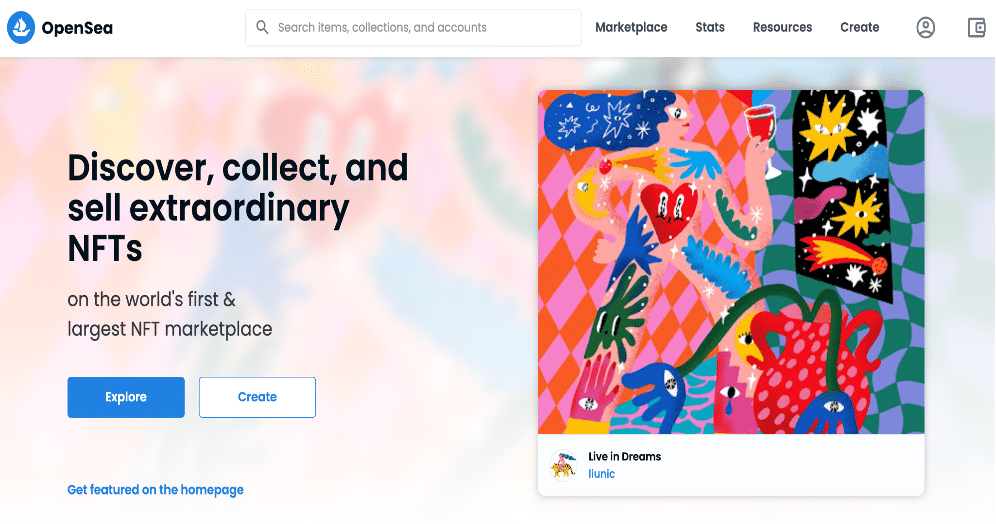
Established in 2017, OpenSea continues to be the largest NFT marketplace. The New York-based platform boasts thousands of non-fungible tokens in over 200 categories, the most popular in music, art, collectibles, virtual worlds, and trading cards.
Some of the most well-known NFTs currently on OpenSea include CryptoPunks, Bored Ape Yacht Club, The Sandbox, etc.
One of the benefits of OpenSea is the competitive 2.5% sales commission, among the lowest in the industry. While the platform was primarily an Ethereum-based application, it is now compatible with the token issuing standards of Klaytn and, of course, Polygon.
Aside from the trading of NFTs, creators can make their own collection, while users can ‘mint’ their own tokens with no coding experience.
Decentraland
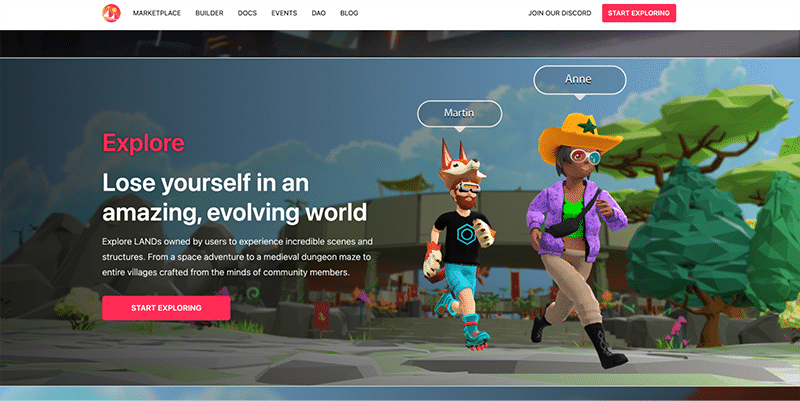
According to the latest CoinMarketCap rankings, Decentraland’s MANA (the platform’s utility token) is the most traded NFT and metaverse-related cryptocurrency, with a market cap of about $4.8 billion.
Originally conceptualized in 2017, Decentraland is a virtual reality world where users create and navigate the most imaginative landscapes, ranging from villages, theme parks, and mazes to fashion districts, galleries, and casinos.
Moreover, participants can tokenize these land parcels (referred to as LAND) into NFTs, of which only 90 000 have been set to exist on Decentraland’s entire map. OpenSea is one of the most popular marketplaces for buying, selling, and even renting LAND.
Some of the industry’s most expensive digital real estate has been sold on Decentraland. Thus, the platform has recently become the playground for many well-known corporations, like Sotheby’s, Samsung, Republic Realm, etc., looking to take advantage of the massive monetization potential in metaverses.
Aavegotchi
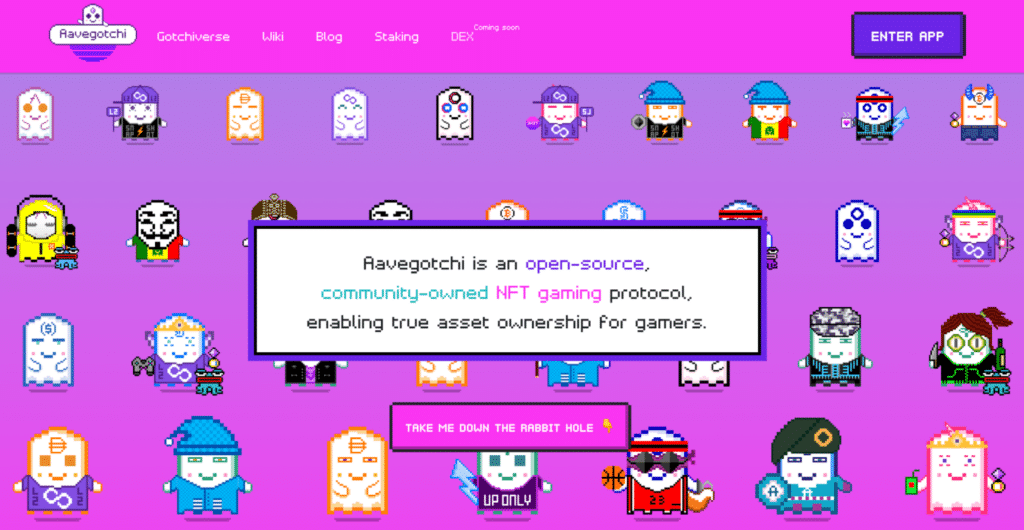
Aavegotchi is a Tamagotchi-inspired collectible game where users trade NFT avatars known as ‘Aavegotchis’ on Aave, one of the leading DeFi (decentralized finance) protocols. Participants use the tokens to interact with the game’s digital universe, Gotchiverse.
Each digital collectible has unique attributes characterized by a rarity score based on particular character traits, attached wearables, how often players interact with their avatars, and more.
Thus, Aavegotchi is multifaceted as it incorporates numerous elements like DeFi, play-to-earn gaming, and staking (through Aave’s interesting-generating aTokens). Aavegotchi recently introduced Gotchi Lending, where participants can use their NFTs to lend.
Gamers can enter into NFT raffles to gain exclusive wearables and other items unique to the Gotchiverse. Aside from staking aTokens, one can also earn rewards from staking the protocol’s utility token is GHST (in reference to ‘Aave,’ a Finnish word for ghost).
Obtaining GHST tokens is the first step to having your own Aavegotchi before engaging in the game’s universe.
Decentral Games
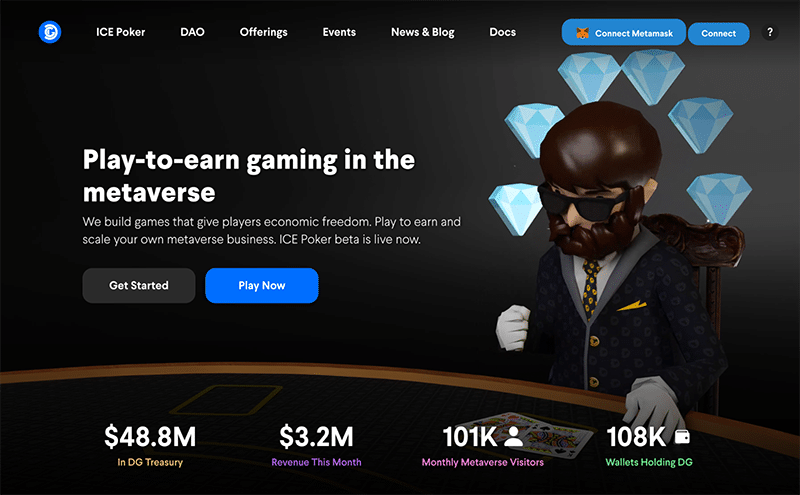
Decentral Games is a developer of metaverse-based play-to-earn games focused on delegation, yield generation, aligned incentives, and self-custody. The main project currently live here is ICE Poker, an individual and collaborative poker game where users play to earn ICE (the in-game currency) daily.
To participate in ICE Poker, one must obtain an exclusive ‘NFT wearable,’ which you can purchase from OpenSea, on Decentral Games’ marketplace, or delegate from another player on Discord.
Delegators are entitled to a 40% revenue split from ICE rewards. Occasionally, the Decentral Games team distributes wearables on their marketplace for free. With a wearable, players receive between 3000-5000 chips daily to play and stand a chance of earning ICE.
DG is the second currency of Decentral Games, a governance token for their treasury. By staking DG, gamers have voting rights in deciding critical future changes to the platform.
Polychain Monsters
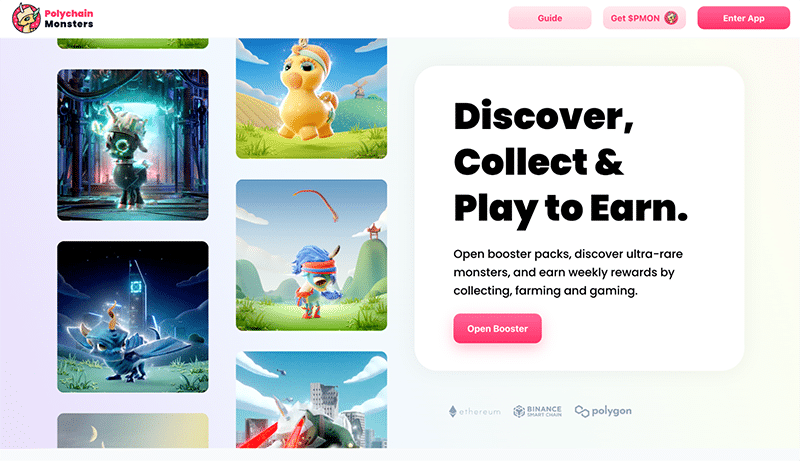
Polychain Monsters (previously known as Polkamon) is a Pokémon-esque animated NFT gaming project centered around collectible animated monsters called ‘Polymons.’
Players unpack these from ‘booster packs’ (more than 2.3 million of which have been opened) using Polychain’s in-game currency, PMON, built with the Polygon, Ethereum, and Binance Smart Chain blockchains.
Each pack has three Polymons consisting of peculiar traits like color, horns, type, glitter effect, and other special features. As with many digital animal-like designs, certain combinations are scarcer than others, with a few trading well into the tens of thousands of dollars on places like OpenSea.
The other prominent component of Polychain is ‘farming,’ which is a form of staking where participants complete challenges to earn passively in PMON. Developers behind this project have also promised to include numerous play-to-earn games to further expand Polychain’s massive ecosystem.
Curtain thoughts
Decentralized applications, including those that ‘mint’ non-fungible tokens, understandably require massive capacity than your typical transaction. While Ethereum is still the standard most people use, it’s long been plagued with high gas fees and slowness.
Blockchains like Polygon were built to address these problems as so-called layer 2 scaling solutions, ensuring a cost-effective and user-friendly future growth of the NFT market. Therefore, we should expect an increasing number of NFT applications using Polygon as time goes on.

